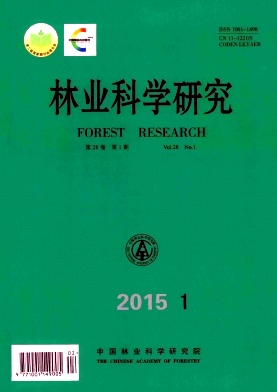Cloning and Expression Analysis of PsCCH from Populus simonii under Stresses of Heavy Metal
-
1.
State Key Laboratory of Forest Genetics and Tree Breeding, Research Institute of Forestry, Chinese Academy of Forestry, Key Laboratory of Tree Breeding and Cultivation, State Forestry Administration, Beijing 100091, China
-
Received Date:
2013-02-26
-
Abstract
The CCH gene from Populus simonii leaf was cloned according to a strategy combining bioinformatics and molecular biological approaches and its expression in response to heavy metals and plant growth regulators was detected by qPCR. This gene encodes a polypeptide of 85 amino acids, named as PsCCH. The deduced amino acid sequence of PsCCH possesses the conserved metal-binding motif in its N-terminal (MXCXXC) and has the classic βαββαβ-fold structure. Phylogeny analysis showed that the PsCCH was much closer to the CCH from Hevea brasiliensis,Jatropha curcas and Vitis vinifera (with 90%-93% in amino acids similarity). The results of qPCR showed that the expression of PsCCH was regulated by various heavy metals and plant growth regulators: the PsCCH transcripts increased within one hour and then decreased to a lower level after 3 hours, such as in zinc, aluminum, low copper and jasmonic acid treatments; and the PsCCH transcripts continuously decreased during the treatment, such as in high copper, cobalt, mercury and salicylic acid treatments.
-

-
References
|
[1]
|
Karlstrom A R, Levine R L. Copper inhibits the protease from human immunodeficiency virus 1 by both cysteine-dependent and cysteine-independent mechanisms[J]. Proc Natl Acad Sci U S A,1991, 88(13): 5552-5556. |
|
[2]
|
Puig S,Thiele D J. Molecular mechanisms of copper uptake and distribution[J]. Curr Opin Chem Biol, 2002,6(2):171-180. |
|
[3]
|
Laliberte J, Labbe S. The molecular bases for copper uptake and distribution: lessons from yeast[J]. Med Sci (Paris), 2008, 24(3): 277-283. |
|
[4]
|
Harrison M D, Jones C E, Dameron C T. Copper chaperones: function, structure and copper-binding properties[J]. J Biol Inorg Chem,1999, 4(2): 145-153. |
|
[5]
|
Mira H, Martinez-Garcia F, Penarrubia L. Evidence for the plant-specific intercellular transport of the Arabidopsis copper chaperone CCH[J]. Plant J, 2001, 25(5):521-528. |
|
[6]
|
Puig S, Mira H, Dorcey E,et al. Higher plants possess two different types of ATX1-like copper chaperones[J]. Biochem Biophys Res Commun, 2007, 354(2):385-390. |
|
[7]
|
Lee H, Lee J S, Bae E K, et al. Differential expression of a poplar copper chaperone gene in response to various abiotic stresses[J]. Tree Physiol, 2005, 25(4):395-401. |
|
[8]
|
井 鑫, 张兴国.黄瓜CCH基因的生物信息学及表达分析 [D]. 重庆:西南大学,2006:32-39.
|
|
[9]
|
刘关君,曲春浦, 刘明坤, 等. 西伯利亚蓼铜伴侣蛋白基因在盐胁迫条件下的表达分析[J]. 中国生物化学与分子生物学报, 2008,24(11): 1034-1039.
|
|
[10]
|
智颖飙,王再岚,王中生,等. 公路绿化植物油松(Pinus tabulaeformis)和小叶杨(Populus simonii)对重金属元素的吸收与积累[J].生态学报,2007,27(5):1863-1872.
|
|
[11]
|
Company P,Gonzalez-Bosch C. Identification of a copper chaperone from tomato fruits infected with Botrytis cinerea by differential display[J]. Biochem Biophys Res Commun,2003,304(4): 825-830. |
|
[12]
|
Robert-Seilaniantz A, Grant M, Jones J D. Hormone crosstalk in plant disease and defense: more than just jasmonate-salicylate antagonism[J]. Annu Rev Phytopathol,2011,49:317-343. |
-
-
Proportional views

-





 DownLoad:
DownLoad: